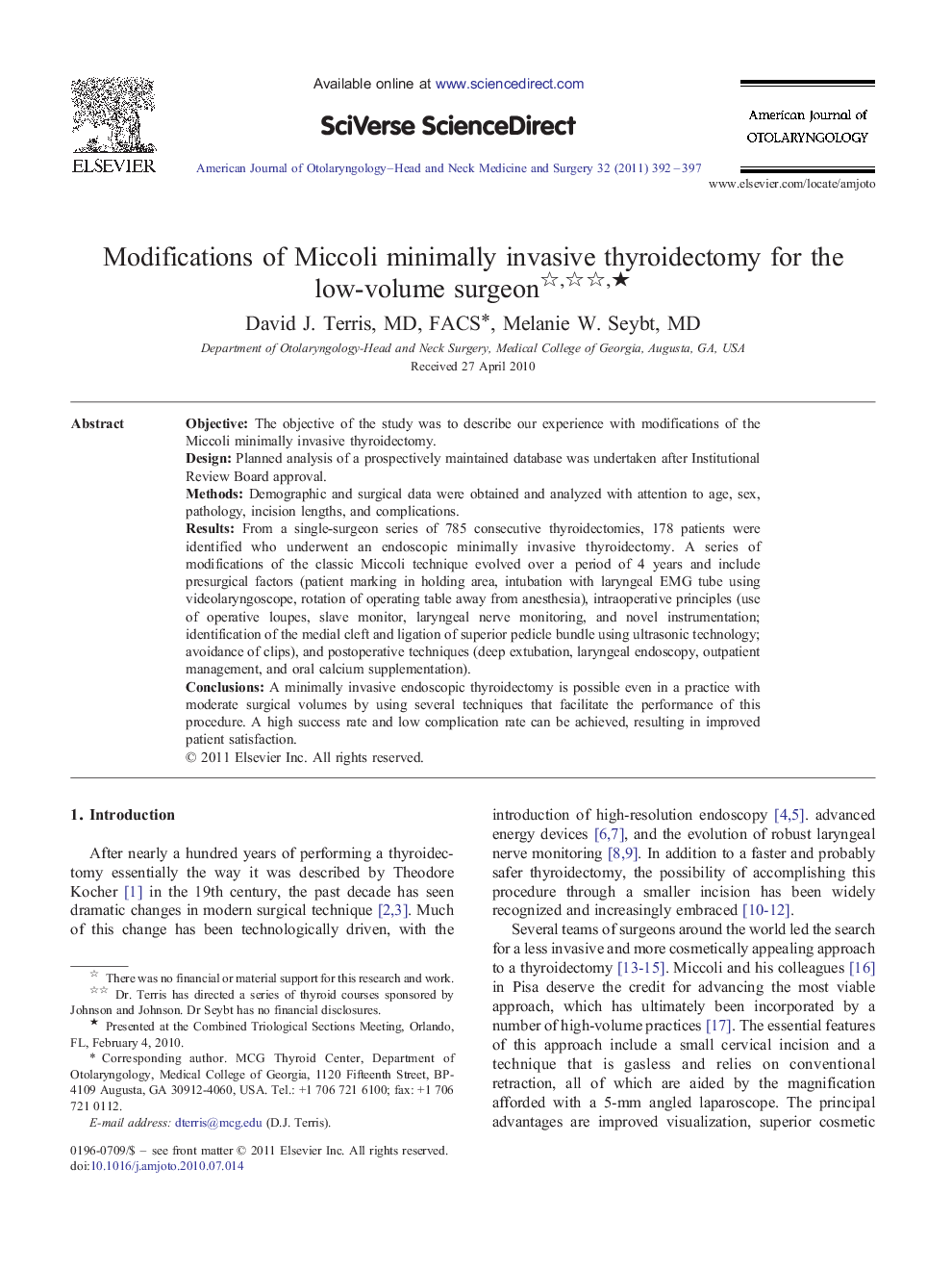| Article ID | Journal | Published Year | Pages | File Type |
|---|---|---|---|---|
| 4103460 | American Journal of Otolaryngology | 2011 | 6 Pages |
ObjectiveThe objective of the study was to describe our experience with modifications of the Miccoli minimally invasive thyroidectomy.DesignPlanned analysis of a prospectively maintained database was undertaken after Institutional Review Board approval.MethodsDemographic and surgical data were obtained and analyzed with attention to age, sex, pathology, incision lengths, and complications.ResultsFrom a single-surgeon series of 785 consecutive thyroidectomies, 178 patients were identified who underwent an endoscopic minimally invasive thyroidectomy. A series of modifications of the classic Miccoli technique evolved over a period of 4 years and include presurgical factors (patient marking in holding area, intubation with laryngeal EMG tube using videolaryngoscope, rotation of operating table away from anesthesia), intraoperative principles (use of operative loupes, slave monitor, laryngeal nerve monitoring, and novel instrumentation; identification of the medial cleft and ligation of superior pedicle bundle using ultrasonic technology; avoidance of clips), and postoperative techniques (deep extubation, laryngeal endoscopy, outpatient management, and oral calcium supplementation).ConclusionsA minimally invasive endoscopic thyroidectomy is possible even in a practice with moderate surgical volumes by using several techniques that facilitate the performance of this procedure. A high success rate and low complication rate can be achieved, resulting in improved patient satisfaction.
